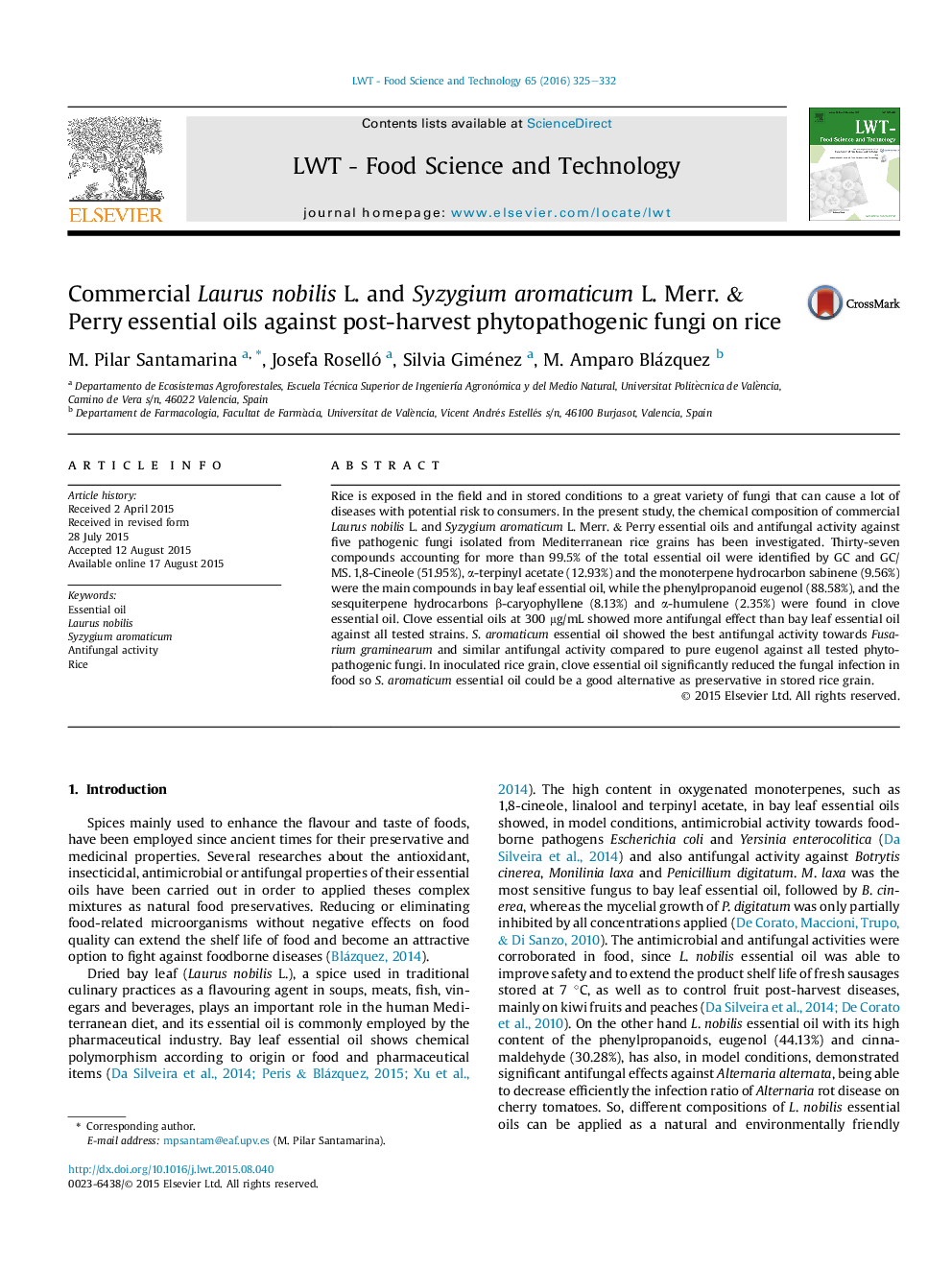| Article ID | Journal | Published Year | Pages | File Type |
|---|---|---|---|---|
| 6401546 | LWT - Food Science and Technology | 2016 | 8 Pages |
â¢The essential oil composition of bay and clove leaves was determined by CG and GC/MS.â¢Clove essential oil inhibited pathogenic fungi in stored rice in a dose-dependent manner.â¢The antifungal activity of clove essential oil is mainly due to high content of eugenol.â¢The antifungal activity of clove in rice-grains for 20 days suggests their use as preservative.
Rice is exposed in the field and in stored conditions to a great variety of fungi that can cause a lot of diseases with potential risk to consumers. In the present study, the chemical composition of commercial Laurus nobilis L. and Syzygium aromaticum L. Merr. & Perry essential oils and antifungal activity against five pathogenic fungi isolated from Mediterranean rice grains has been investigated. Thirty-seven compounds accounting for more than 99.5% of the total essential oil were identified by GC and GC/MS. 1,8-Cineole (51.95%), α-terpinyl acetate (12.93%) and the monoterpene hydrocarbon sabinene (9.56%) were the main compounds in bay leaf essential oil, while the phenylpropanoid eugenol (88.58%), and the sesquiterpene hydrocarbons β-caryophyllene (8.13%) and α-humulene (2.35%) were found in clove essential oil. Clove essential oils at 300 μg/mL showed more antifungal effect than bay leaf essential oil against all tested strains. S. aromaticum essential oil showed the best antifungal activity towards Fusarium graminearum and similar antifungal activity compared to pure eugenol against all tested phytopathogenic fungi. In inoculated rice grain, clove essential oil significantly reduced the fungal infection in food so S. aromaticum essential oil could be a good alternative as preservative in stored rice grain.
